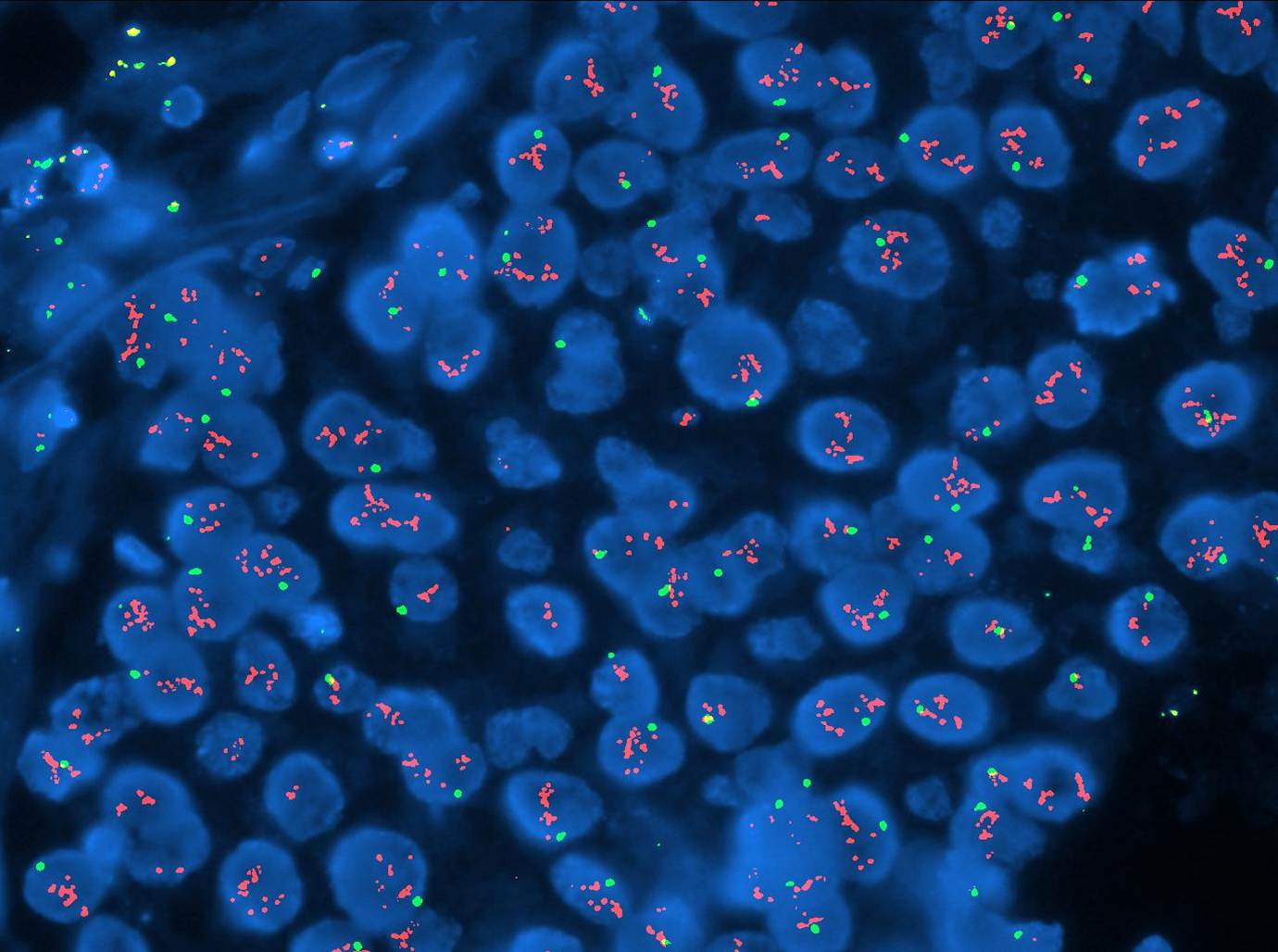Cytogenetics and FISH
Regional Pathology Services through its collaborations with The Human Genetics Laboratory can offer a very comprehensive menu of cytogenetics and Fluorescence in situ hubridization (FISH) testing. Please contact us at 402-559-6420 to inquire about specific probes.
Molecular Oncology Services Brochure
Below is a list of the most commonly ordered FISH probes:
| HER2 | MDM2 | CDK4 | ALK | ROS1 | PLAG1 |
| FUS | DDIT3 | ETV6 | SS18 | COL1A1/PDGFB | EWSR1 |
| EWSR1/CREB1 | EWSR1/ATF1 | NR4A3 | 1p/19q | CIC | USP6 |
| FUS/CREB3L2 | EWSR1/CREB/3L1 | EWSR1/CREB/3L2 | FUS/CREB3L1 | Reflex HER/D17S122 |
COL1A1 |

Fluorescence in situ hybridization (FISH) refers to the binding or annealing of complementary DNA or RNA sequences that serve as probes. With this approach, specific nucleic acid sequences can be detected in morphologically preserved chromosomes or nuclei from fresh, frozen or fixed (paraffin-embedded) tissues. Molecular cytogenetic assays typically are performed with chromosome-specific probes labeled with fluorescent dyes such as fluorescein and detected with fluorescence microscopy.
FISH testing provides supplemental diagnostic information, based on a patient’s tumor DNA, to determine the most effective course of treatment with the least amount of side effects. “The assessment of gene alterations by molecular approaches, such as FISH, has revolutionized the care of patients with specific types of cancers,” Dr. Bridge said.
“Increasingly, more cancer treatments are becoming available that are based on the genetic alterations or defects that are believed to cause that cancer to grow. To pinpoint ‘targeted therapies’ that interfere with tumor growth and progression, the associated molecular target must first be identified in the patient’s tumor sample.”
For example, the examination for the presence of too many copies of a gene called ERBB2 (HER2) by FISH in the tumor cells of a patient with breast cancer is critical to selecting the appropriate medicine (HER2 targeted therapy) for that patient. “Molecular characterization of many different cancer types by FISH also provides vital diagnostic information that is carefully integrated with traditional pathology for the most precise classification and guidance of treatment recommendations,” Dr. Bridge said.




